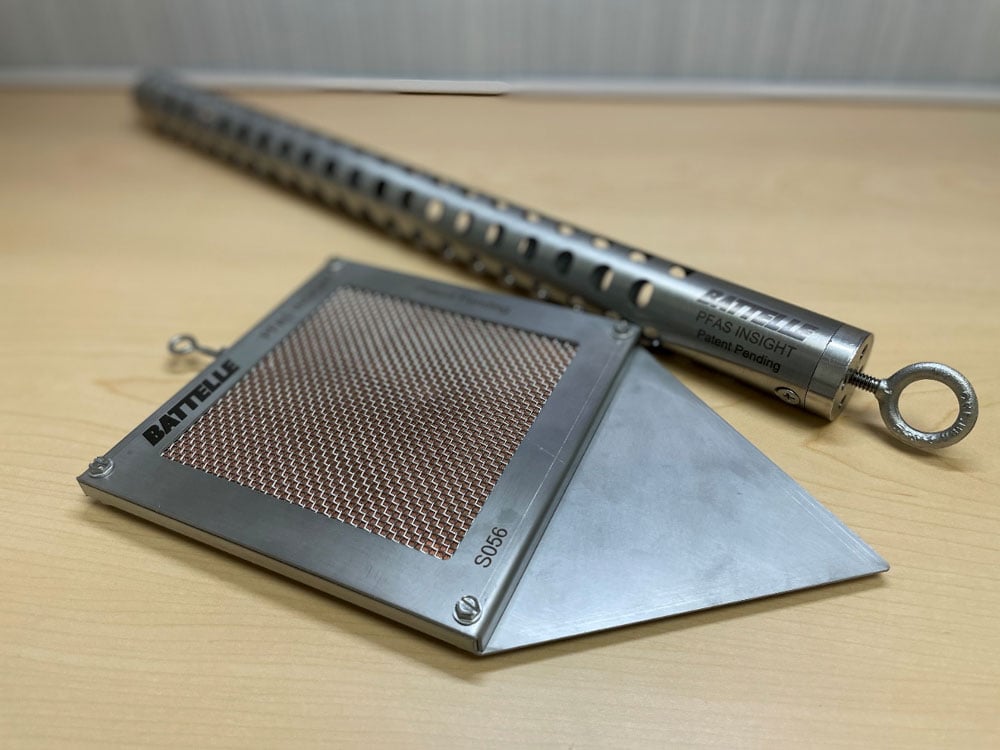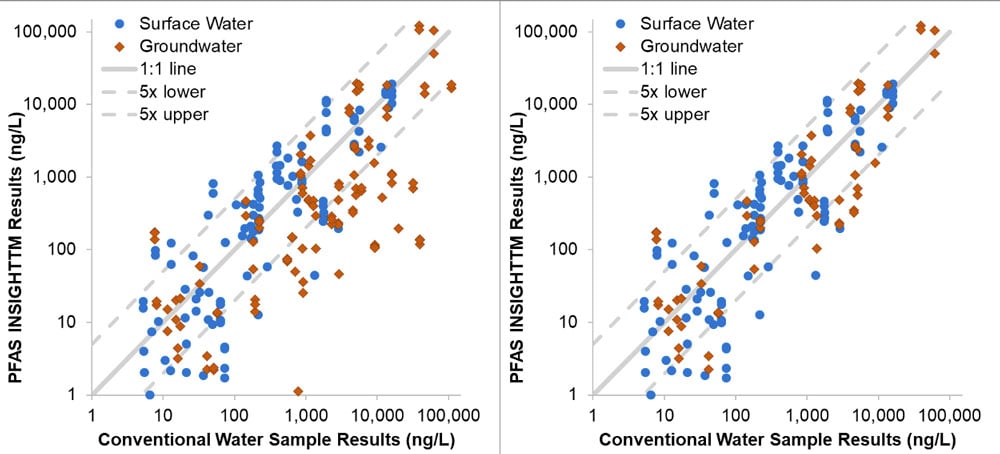Creating New Passive Sampling Technology that Works for PFAS
Connect with an expert opens in a new pageChallenge
The Solution
Battelle has come up with a solution to this challenge with our PFAS Insight® technology. This patent-pending passive sampler consists of a polymeric sorbent suitable for adsorbing neutral and ionic PFAS from a variety of aquatic environments. Laboratory testing conducted for PFAS compounds with carbon chain lengths from four to 12 showed strong pre-concentration of the analytes and equilibration times of one to three weeks, depending on the analyte.
The device provides a time-integrative measurement of PFAS, which allows for minimizing the effects of any short-term concentration spikes or drops, resulting in reliable site characterization or monitoring data with a lower number of samples compared to conventional water sampling.
Additionally, passive sampling provides an easy way of measuring only the freely dissolved, most bioavailable fraction of the total contaminant, which is valuable in risk assessment and could help avoid overly conservative and costly remediation.
Different geometries of the PFAS Insight® sampler hardware have been designed to fit various applications, including groundwater monitoring wells and surface water/porewater sampling.

PFAS Insight® devices for surface water/porewater (front) and groundwater (back) sampling.
The Outcome
Field deployments conducted to date demonstrated a high degree of agreement between the PFAS Insight® results and the results of conventional water sampling analysis, with the majority of the surface water and more than half of the groundwater results
agreeing
within five-fold, as bound by the dashed lines in Figure 3.
It should be noted that the two types of measurements are not equivalent because:
- The passive sampler only measured the freely dissolved (unbound) fraction of PFAS, which may be different at each sampling location, whereas grab samples measure the total PFAS
- The passive sampler results are time-integrated, whereas the grab water sampling results only represent the concentrations at one or two specific times
The purpose of this plot is not to provide a quantitative accuracy assessment, but rather to showcase the general agreement trend between the two methods. For a subset of groundwater wells, the passive sampler results were lower than those obtained from grab water sample analysis indicating that a big fraction of PFAS is not in its most bioavailable, freely dissolved form and/or that slow recharge of water into these wells resulted in incomplete equilibration of the passive samplers.

Comparison of PFAS Insight® and grab water sampling analysis results. a) All results collected to date, b) All results except the monitoring wells where PFAS uptake by the passive sampler is suspected to be significantly impacted by limited PFAS bioavailability and/or slow well recharge.
Case Studies
Technology Commercialization and Licensing
With over 90 years of research and development experience, Battelle supports all areas of industry with intellectual property licensing focused on bringing our cross-disciplinary expertise to meet our clients' most difficult challenges.
